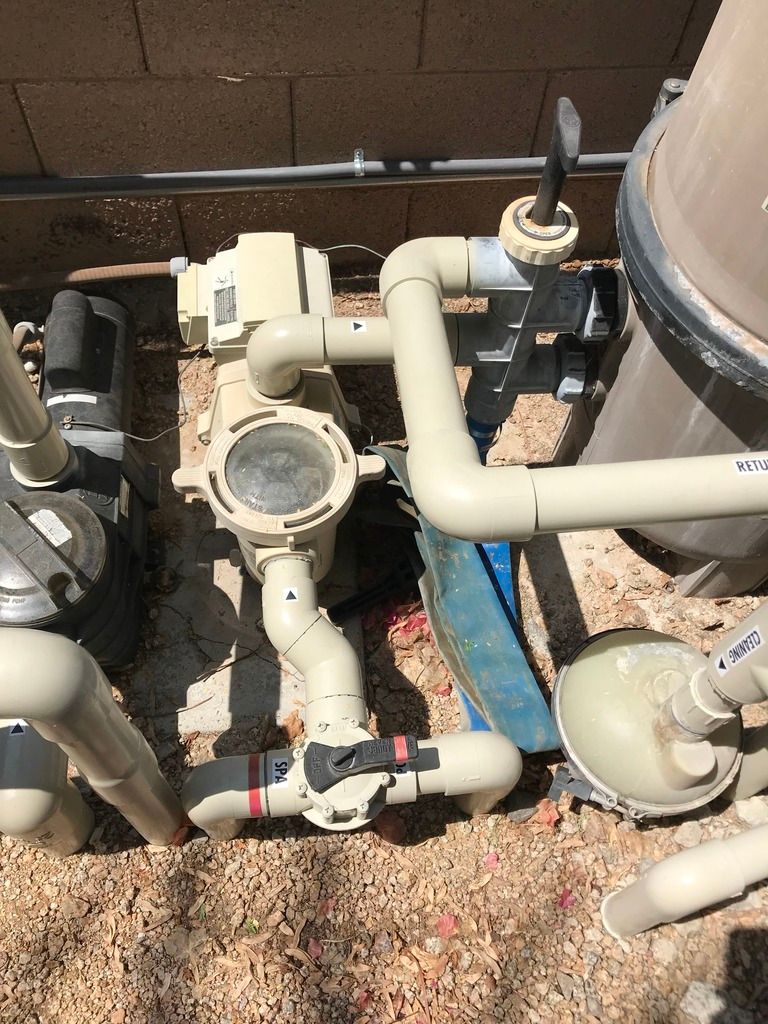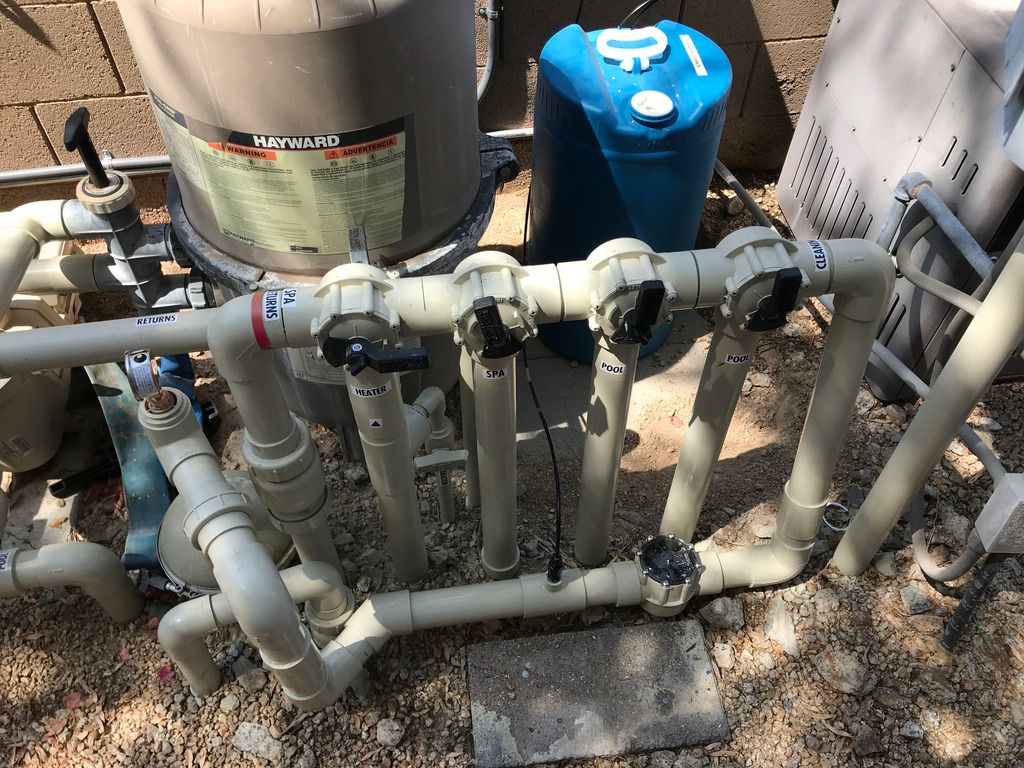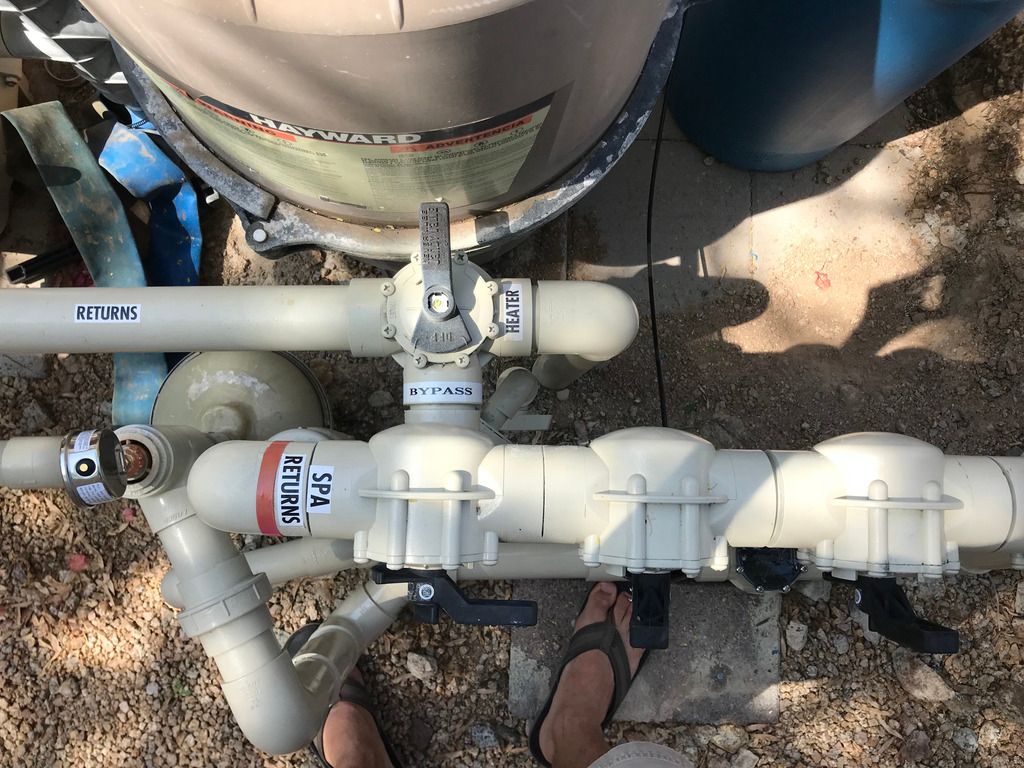I have a question regarding my in floor A&A pool cleaners.
1. It says in the manual: "If your pool is equipped with a heater or salt chlorinator, make sure theheater bypass valve is adjusted properly and is not completely closed." Right now I am just running everything through my water heater and nothing through the bypass. So how much should I run through the bypass?
2. Guess this question could be connected to question 1 There is a pressure gauge on top of the floor cleaner valve. Doesn't work right now, but I have ordered a replacement. What exactly am I looking for on this gauge?
There is a pressure gauge on top of the floor cleaner valve. Doesn't work right now, but I have ordered a replacement. What exactly am I looking for on this gauge?
1. It says in the manual: "If your pool is equipped with a heater or salt chlorinator, make sure theheater bypass valve is adjusted properly and is not completely closed." Right now I am just running everything through my water heater and nothing through the bypass. So how much should I run through the bypass?
2. Guess this question could be connected to question 1





